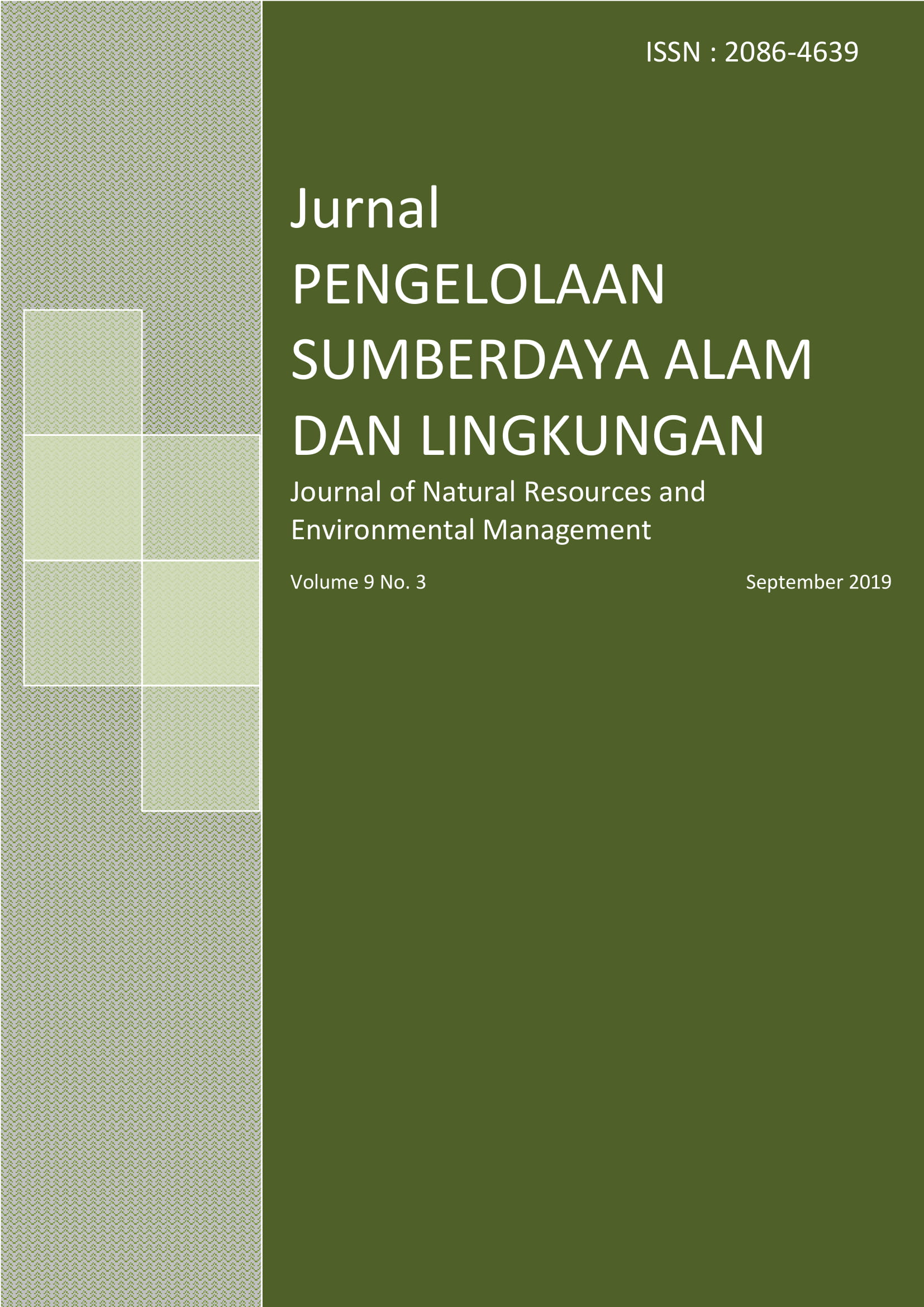Cost Benefit Analysis dalam Pengembangan Fasilitas Pengolahan Sampah: Studi Kasus Kota Pekanbaru
Abstract
References
Ahamed A, Yin K, Ng BJH, Ren F, Chang VWC, Wang JY. 2016. Life cycle assessment of the present and proposed food waste management technologies from environmental and economic impact perspectives. Journal of Cleaner Production. 131:607-6014.
Aleluia J, Ferrão P. 2017. Assessing the costs of municipal solid waste treatment technologies in developing Asian countries. Waste Management. 69:592-608.
Badan Pusat Statistik. 2017. Kota Pekanbaru dalam Angka 2017. Pekan Baru: BPS Kota Pekan Baru.
Damanhuri E, Padmi T. 2016. Pengelolaan Sampah Terpadu. Bandung: Penerbit ITB.
Dethan MN, Kallau J, Pelokilla MR. 2014. Volume sedimen dan valuasi ekonomi sumberdaya air embung di Kota Kupang. Jurnal Ilmu Lingkungan. 12(2):118-128.
Dobraja K, Barisa A, Rosa M. 2016. Cost-benefit analysis of integrated approach of waste and energy management. Energy Procedia. 95:104-111.
Ghinea C, Gavrilescu M. 2016. Costs analysis of municipal solid waste management scenarios: IASI-Romania Case Study. Journal of Environmental Engineering and Landscape Management. 24:185-199.
IPCC. 2006. Guidelines for National Greenhouse Gas Inventories – A primer. Japan (JP): Prepared by the National Greenhouse Gas Inventories Programme (IGES).
Kawai M, Purwanti IF, Nagao N, Slamet A, Hermana J, Toda T. 2012. Seasonal variation in chemical properties and degradability by anaerobic digestion of landfill leachate at Benowo in Surabaya, Indonesia. Journal of Environmental Management. 110:267-275.
Maulana H, Anggora S, Yulianto B. 2016. Kajian kondisi dan nilai ekonomi manfaat ekosistem terumbu karang di Pantai Wediombo, Kabupatan Gunung Kidul, Daerah Istimewa Yogyakarta. Jurnal Ilmu Lingkungan. 14(2):82-87.
Nugraha A, Sutjahjo SH, Amin AA. 2018. Persepsi dan partisipasi masyarakat terhadap pengelolaan sampah melalui bank sampah di Jakarta Selatan. Jurnal Pengelolaan Sumberdaya Alam dan Lingkungan. 8(1):7-14.
Peraturan Menteri Kesehatan No. 69 Tahun 2013. Standar Tarif Pelayanan Kesehatan dalam Penyelenggaraan Program Jaminan Kesehatan. Tanggal
Peraturan Menteri Lingkungan Hidup No. 12 Tahun 2010. Pelaksanaan Pengendalian Pencemaran Udara di Daerah. Tanggal 26 Maret 2010.
Peraturan Menteri Pekerjaan Umum No. 3 Tahun 2013. Penyelenggaraan Prasarana dan Sarana Persampahan dalam Penanganan Sampah Rumah Tangga dan Sampah Sejenis Sampah Rumah Tangga. Tanggal 14 Maret 2013.
Peraturan Presiden No. 97 Tahun 2017. Kebijakan dan Strategi Nasional Pengelolaan Sampah Rumah Tangga dan Sampah Sejenis Sampah Rumah Tangga.Tanggal 24 Oktober 2017.
Pieter J, Benu F, Kaho MR. 2015. Valuasi ekonomi ekowisata terhadap pengembangan objek wisata kawasan pesisir pantai. Jurnal Ilmu Lingkungan. 13(1):55-64.
Raharjo S, Sitorus SRP, Suwandi. 2018. Analisis potensi lahan dan strategi pengembangan sawah baru secara berkelanjutan di Kecamatan Jatigede, Kabupaten Sumedang, Provinsi Jawa Barat. Jurnal Pengelolaan Sumberdaya Alam dan Lingkungan. 8(1):26-35.
Sanchez VM, Kromann MA, Astrup TF. 2014. Life cycle costing of waste management systems: Overview, calculation principles and case studies. Waste Management. 36:343-355.
Setiyani AD, Fraiture C, Susanto RH, Duker A. 2018. Economic valuation for water supply from Merapi Volcano National Park (Case study: Kali Kuning Sub Watershed). Jurnal Pengelolaan Sumberdaya Alam dan Lingkungan. 7(1):29-36.
Standar Nasional Indonesia. SNI 19-3964-1994. Metode Pengambilan dan Pengukuran Contoh Timbulan Sampah Perkotaan. Jakarta: Badan Standardisasi Nasional.
USEPA. 2017. The Social Cost of Carbon: Estimating the Benefits of Reducing Greenhouse Gas Emissions. [diunduh 2018 Apr 26]. Tersedia pada: https://19january2017snapshot.epa.gov/climatechange/social-cost-carbon_.html.
Authors
Authors who publish with this journal agree to the following terms:
- Authors retain copyright and grant the journal right of first publication with the work simultaneously licensed under a Creative Commons Attribution License that allows others to share the work with an acknowledgement of the work's authorship and initial publication in this journal.
- Authors are able to enter into separate, additional contractual arrangements for the non-exclusive distribution of the journal's published version of the work (e.g., post it to an institutional repository or publish it in a book), with an acknowledgement of its initial publication in this journal.
- Authors are permitted and encouraged to post their work online (e.g., in institutional repositories or on their website) prior to and during the submission process, as it can lead to productive exchanges, as well as earlier and greater citation of published work (See The Effect of Open Access).






